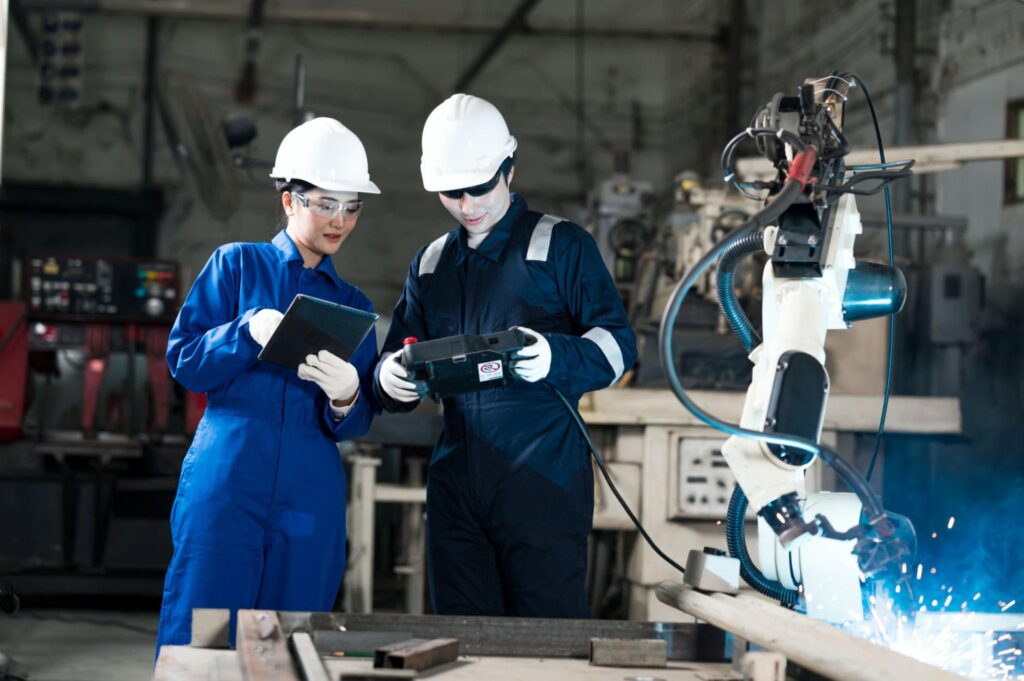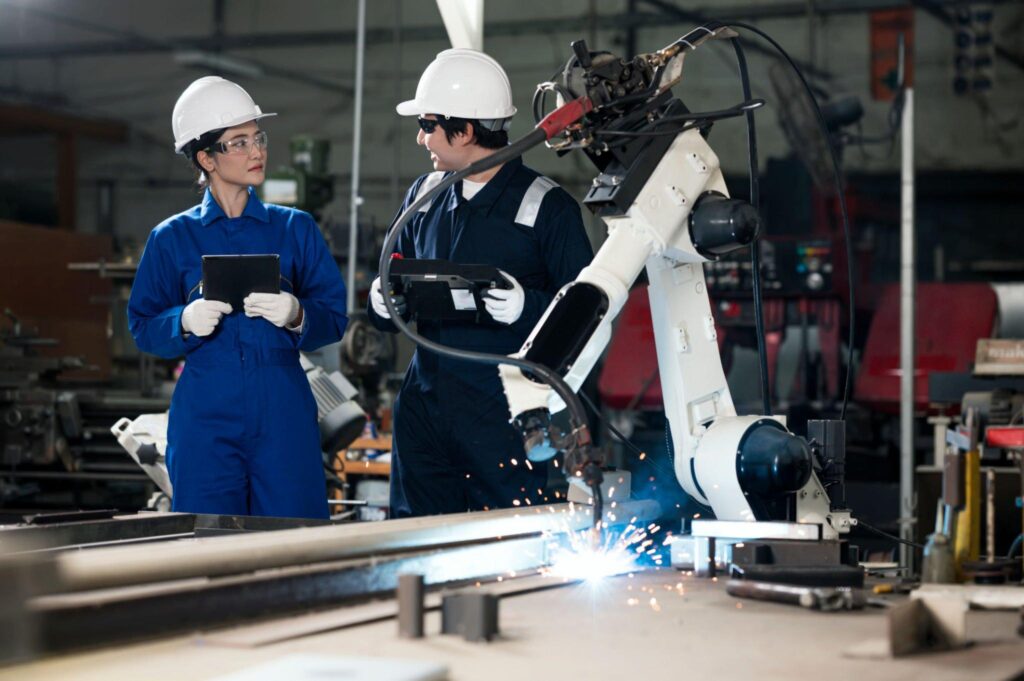Arc Welding Robots Best top level Manufacturing Industry
In today’s fast-paced industrial landscape, automation has become a driving force in increasing efficiency and precision across various industries. One such area where automation has made significant strides is in welding, particularly with the emergence of arc welding robots. These sophisticated machines have revolutionized the welding process, offering a myriad of advantages that have reshaped the manufacturing and construction sectors. In this article, we will delve deep into the world of arc welding robots, exploring their functionality, benefits, applications, and the exciting prospects they bring to the table.
Table of Contents
Understanding Arc Welding Robots

What Are Arc Welding Robots?
Arc welding robots, also known as robotic welding systems, are automated machines designed to perform welding tasks with exceptional precision and speed. They utilize electricity to create an electric arc between an electrode and the workpiece, which generates the heat needed to melt and fuse metals together. These robots are equipped with advanced sensors and programming to ensure accuracy and consistency in their welding processes.
The Advantages of Arc Welding Robots

1. Enhanced Precision
One of the most significant advantages of arc welding robots is their unparalleled precision. These machines can weld intricate patterns and joints with minimal error, ensuring high-quality welds consistently.
2. Increased Efficiency
Arc welding robot work tirelessly without fatigue, significantly increasing the speed and efficiency of welding operations. This leads to reduced production times and lower labor costs.
3. Improved Safety
By taking over hazardous welding tasks, arc welding robots enhance workplace safety. Human welders are no longer exposed to harmful fumes, extreme temperatures, and potential accidents.
4. Consistency in Quality
Robotic welding systems produce welds with a consistent level of quality. This reliability eliminates variations caused by human error, resulting in products of superior quality.
Applications of Arc Welding Robot

Arc welding robot find applications in various industries, including:
1. Automotive Manufacturing
In the automotive industry, these robots are used for welding car frames, exhaust systems, and other components, ensuring structural integrity and precision.
2. Aerospace
Arc welding robot play a crucial role in manufacturing aircraft components, where precision and quality are of utmost importance.
3. Shipbuilding
In shipyards, these robots weld large metal structures, providing strength and durability to vessels.
4. Construction
Robotic welding systems are employed in constructing steel buildings and bridges, making the process faster and more cost-effective.
The Future Outlook

The future of arc welding robots is bright, with continuous advancements in technology. These machines are becoming smarter, more agile, and adaptable to a wider range of materials and applications. With the integration of artificial intelligence and machine learning, they can adapt to changing welding conditions in real-time, further improving efficiency and quality.
Conclusion
Arc welding robot have undeniably transformed the welding industry, offering precision, efficiency, and safety on a scale that was once unimaginable. As technology continues to evolve, we can expect these robots to become even more integral in various sectors. The future of welding is automated, and arc welding robots are at the forefront of this exciting transformation.
FAQs
Are arc welding robot suitable for small-scale welding tasks?
Yes, arc welding robot can be programmed to handle both large-scale and small-scale welding tasks with precision.
How do arc welding robots ensure weld quality?
These robots are equipped with advanced sensors and programming that monitor and adjust the welding parameters in real-time, ensuring consistent weld quality.
Can arc welding robots work alongside human welders?
Yes, collaborative arc welding robots are designed to work safely alongside human operators, enhancing productivity and efficiency.
What materials can arc welding robot weld?
Arc welding robot can weld a wide range of materials, including steel, aluminum, and stainless steel, among others.
Are arc welding robots cost-effective for small businesses?
While the initial investment may be significant, the long-term cost savings in labor and increased efficiency often make arc welding robot a cost-effective choice for small businesses.
Access Now: Exploring the NAO Robot A Comprehensive Guide
In conclusion, arc welding robots are driving the welding industry towards a more efficient, precise, and safe future. With their ability to handle a variety of applications and continuous technological advancements, they are poised to play a pivotal role in shaping the manufacturing and construction landscape for years to come.


One thought on “Arc Welding Robots Best top level Manufacturing Industry”